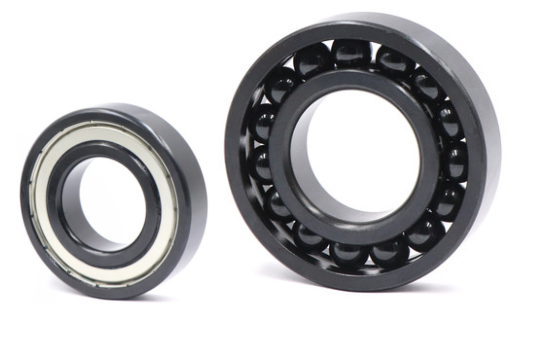Overview of high temperature resistant bearings

Most customers do not know much about high-temperature-resistant bearings. If they have not used them, it is difficult to distinguish the temperature grade of high-temperature resistant bearings. Here is a detailed introduction to the relevant knowledge of high-temperature resistant bearings.
The first thing that should be explained is the temperature range of ordinary bearings. The conventional bearing material we use daily is GCr15 high carbon chromium bearing steel. This is a high-carbon chromium-bearing steel with a low alloy content. After quenching and low-temperature tempering, it has higher hardness, uniform structure, good wear resistance, and higher contact fatigue performance.
The maximum operating temperature of ordinary bearings is 120°C. Therefore, when the ambient temperature of mechanical equipment is higher, high-temperature-resistant bearings with better heat resistance are needed.
Temperature grades and classifications of high temperature-resistant bearings
1. Temperature grade of high-temperature resistant bearings
· The general temperature grades of 0--600℃ high temperature resistant bearings are divided into 200℃, 300℃, 400℃, 500℃, 600℃. The commonly used temperature grades are 300℃ and 500℃.
· In the 600--800℃ temperature range, high-temperature resistant bearings are generally divided into two types: all steel high-temperature resistant bearings and ceramic hybrid high-temperature resistant bearings.
· 800--1200℃ High-temperature resistant bearings are generally made of silicon nitride ceramics and are used to replace steel in high-temperature environments that are difficult to reach.
2. The temperature classification of high-temperature bearings is as follows:
· Ordinary bearing steel has high-temperature resistance: 150-200°C (its structure is full of rolling elements, which has a short service life and high maintenance costs in the future)
· High-temperature alloy steel: 300-500℃ (its structure includes a cage and full rolling elements; the service life is more than one year, recommended)
· Silicon nitride ceramic rolling elements: 800-1200°C (its structure is full of rolling elements, long service life, and high cost). If your use environment does not exceed 500°C, you can use the second material.
The selection should be based on the actual application environment. For example, if the working environment is harsh, the operating temperature is high, and the speed requirements are high, then high-temperature resistant bearings containing cages, sealing rings, and imported high-temperature grease must be used.
Structural classification
1. Conventional bearing structure
Because the full ball bearing does not have a cage, the increased number of rolling elements dramatically increases the bearing's heavy load and low-speed characteristics. It has a longer service life and is suitable for high-temperature bearings with a temperature range of 0-800. However, the disadvantage is that the limit speed of this type of high-temperature bearing is low, generally no more than 100r/min, and it will be even lower for bearings with larger inner diameters. Categories that meet this type of bearing conditions include deep groove ball bearings, aligning ball bearings, single-row cylindrical roller bearings, and outer spherical ball bearings.
It should be noted that the high speed mentioned in the article does not mean that the bearing can reach a high limit speed but is compared to a "full complement of rolling element high-temperature bearings." Affected by bearing clearance and other factors, it can generally reach 70% to 80% of ordinary bearings' national standard limit speed. This type of bearing can withstand a temperature range within 600°C.
2. Full ceramic or hybrid ceramic bearings
Ceramic bearings can generally withstand high temperatures, and the ultimate temperature can reach 1200°C, but this can only be achieved with a ceramic cage, graphite cage, or no cage. The temperature resistance of hybrid ceramic bearings (steel inner and outer rings and ceramic balls) is lower. If paired with a steel cage, it can only reach the ultimate temperature of 600°C. However, due to the high hardness of the ceramic balls, they are light in weight. It can achieve high speed and long service life.
In addition, there are new high-temperature resistant bearings such as 600 ℃,800 ℃, graphite self-lubricating, stainless steel bearings, all-ceramic bearings, ceramic hybrid bearings, etc. Since the bearing codes of the manufacturers will be slightly different, we will not list them in detail here.
The difference between high-temperature resistant bearings and ordinary bearings
· If the bearing parts are made of bearing steel and treated with high-temperature tempering, their suffix code shall be by the provisions of JB/T2974 (the parts have been treated with high-temperature tempering and the working temperature can reach 150C°, and their suffix code shall be /S0; parts After high-temperature tempering treatment, the working temperature can reach 200°C, and its setting code is /S1; after high-temperature tempering treatment, the working temperature can reach 250°C, and its setting code is /S2; after high-temperature tempering treatment, the setting code is /S2. The working temperature can reach 300°C, and its setting code is /S3; the parts have been treated with high-temperature tempering, and the working temperature can reach 350°C, and its setting code is /S4).
· The parts of the bearing are made of heat-resistant steel, and their suffix codes are in accordance with the provisions of JB/T2974 (the material is Cr4Mo4V, and its suffix code is /HN; the material is Cr14Mo4, and its suffix code is /HN1; the material is Cr15Mo4V, its suffix code is /HN2; the material is W18Cr4V, its suffix code is /HN3).
MEET Bearing Group is an authorized agent for HWT and Shanghai B&Y brand high-temperature resistant bearings, providing customers with good quality high-temperature resistant bearings comparable to imported bearings.
